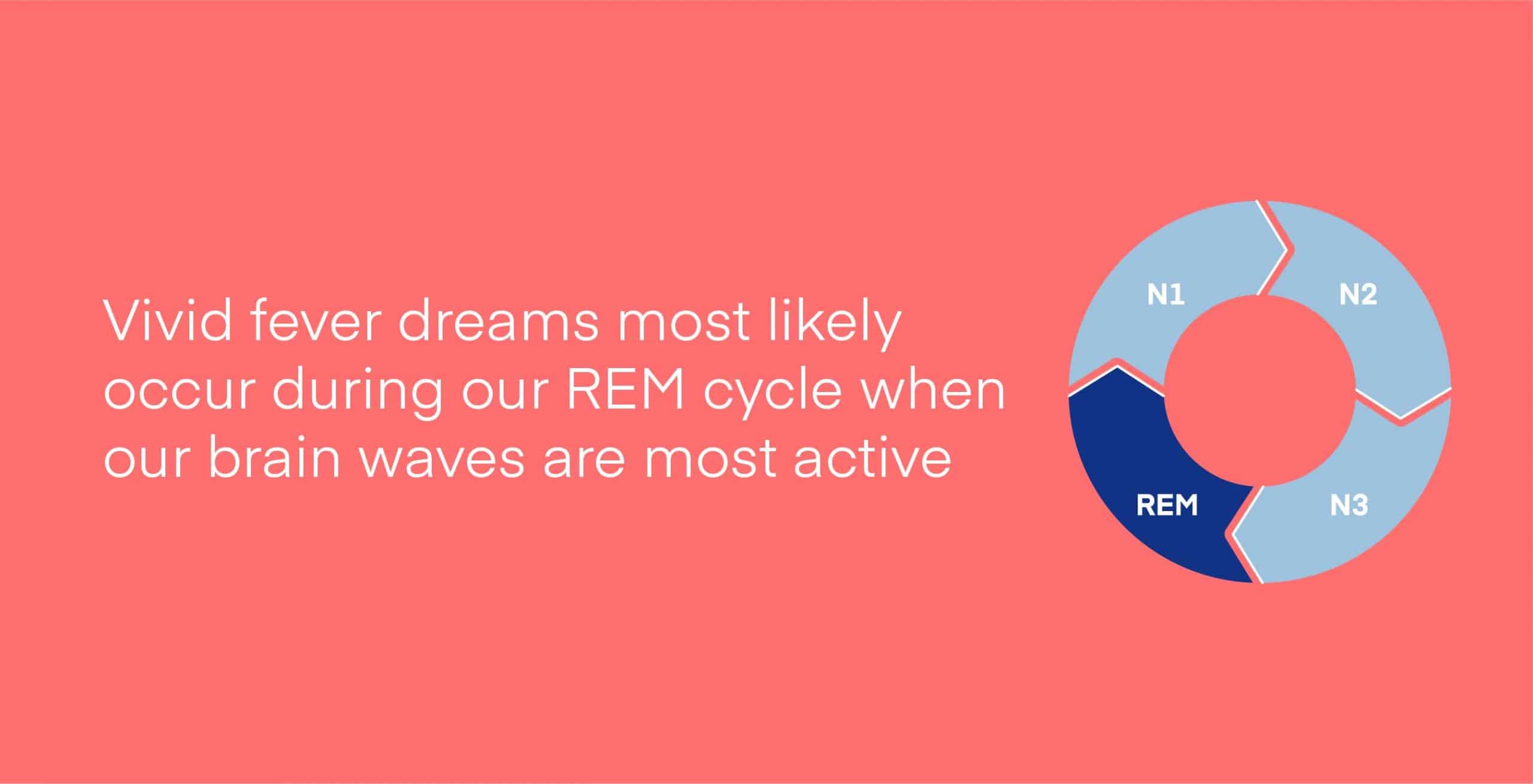Physiological and Neurological Differences: Dream Vs Fever Prediction
Dream vs fever prediction – Dreams and fevers, while sharing some common symptoms like hallucinations and altered states of consciousness, are distinct experiences with unique physiological and neurological underpinnings. Dreams occur during rapid eye movement (REM) sleep, a stage characterized by vivid imagery, rapid breathing, and increased brain activity. Fevers, on the other hand, are triggered by an immune response to infection or inflammation, causing an elevation in body temperature and alterations in brain function.
In the realm of divination, dreams and fevers have long been intertwined. Some believe that dreams offer a glimpse into our subconscious, while fevers can cloud our minds and lead to hallucinations. Yet, like an umbrella that shields us from the elements, rational thought can protect us from the distortions of both dreams and fevers, helping us to discern truth from illusion.
Brain Activity Patterns
During REM sleep, the brain exhibits high-frequency, low-amplitude electrical activity known as theta waves. These waves are associated with memory consolidation, creativity, and emotional processing. In contrast, fevers are characterized by slow, high-amplitude delta waves, indicative of deep sleep and reduced brain activity.
The boundary between dreams and fevered predictions blurs, like a channel that shifts between reality and the ethereal. In the realm of dreams, visions dance with the rhythm of our subconscious, while fevered predictions ignite a flame of uncertainty, leaving us suspended between the tangible and the intangible.
| State | Brain Wave Pattern | Associated Functions |
|---|---|---|
| Dreams (REM Sleep) | Theta waves (high-frequency, low-amplitude) | Memory consolidation, creativity, emotional processing |
| Fevers | Delta waves (slow, high-amplitude) | Deep sleep, reduced brain activity |
Hormonal and Neurochemical Factors
Dreams are influenced by a complex interplay of hormones and neurochemicals. The neurotransmitter acetylcholine is crucial for REM sleep and dream formation, while serotonin and norepinephrine inhibit dream activity. Fevers, on the other hand, are primarily driven by the release of cytokines, proteins that trigger inflammation and fever. These cytokines can also affect brain function, contributing to the delirium and hallucinations associated with high fevers.
Subjective Experiences and Manifestations

Dreams and fevers are two distinct physiological states that can profoundly impact our subjective experiences and mental processes. Both phenomena involve altered states of consciousness and can trigger vivid imagery, intense emotions, and cognitive distortions.
Dreams, typically occurring during sleep, are characterized by their vividness and often surreal content. They can be lucid, where the dreamer is aware they are dreaming, or non-lucid, where they are not. Dreams can evoke a wide range of emotions, from joy and excitement to fear and anxiety.
Fevers, on the other hand, are a physiological response to infection or illness. They can cause a range of symptoms, including elevated body temperature, chills, and muscle aches. Fevers can also affect cognitive function, leading to confusion, delirium, and hallucinations.
Influence on Perception, Memory, and Cognition
Dreams and fevers can both influence our perception, memory, and cognitive function. Dreams can distort our perception of time and space, and can lead to vivid and memorable experiences that can be difficult to distinguish from reality. Fevers can impair memory and cognitive function, making it difficult to concentrate and make decisions.
Therapeutic and Diagnostic Value
The analysis of dreams and fevers can have therapeutic and diagnostic value. Dream analysis can provide insights into our unconscious thoughts and emotions, and can be used to identify and resolve psychological issues. Fever analysis can help to identify the underlying cause of an infection or illness, and can be used to monitor the effectiveness of treatment.
Cultural and Historical Perspectives

Throughout history and across cultures, dreams and fevers have held profound significance, shaping beliefs, practices, and artistic expressions.
In ancient Egypt, dreams were considered messages from the gods, and their interpretation was a specialized art. In many Native American cultures, dreams were believed to provide guidance and healing, and fever was seen as a purifying force.
Mythology and Folklore
Dreams and fevers have been woven into the fabric of myths and folklore worldwide. In Greek mythology, Morpheus, the god of dreams, could visit mortals in their sleep and manipulate their dreams. In Norse mythology, fever was personified as the goddess Gefjun, who plowed the land with oxen to create new islands.
Literature and the Arts
Dreams and fevers have inspired countless works of literature and art. In Shakespeare’s “Hamlet,” the protagonist’s fevered delirium leads to his tragic downfall. In Emily Dickinson’s poem “Because I could not stop for Death,” the speaker’s fevered state blurs the boundaries between life and death.
Cultural Practices and Rituals, Dream vs fever prediction
Dreams and fevers have also influenced cultural practices and rituals. In some cultures, dream interpretation is still practiced as a way to gain insight into the future or the subconscious. In traditional Chinese medicine, fever is often treated with herbs and acupuncture, based on the belief that it is caused by an imbalance of energy.
Whether dreams or fever predictions, both can pierce the veil of reality like a sword definition. The blade of a dream slices through the layers of consciousness, revealing hidden truths. Feverish visions ignite with a similar sharpness, burning away the mundane to expose the raw nerves of existence.
Like a double-edged sword, these visions can both heal and harm, offering glimpses of what lies beyond the boundaries of our waking minds.
In the labyrinthine realms of dreams and fevered visions, the lines between prophecy and delirium blur. Yet, like the glittering facets of a diamond illuminating the darkness , there may be hidden truths within the kaleidoscope of our subconscious. As we navigate the treacherous terrain of dreams and fever predictions, we seek the elusive gems of clarity, hoping to decipher the cryptic messages etched upon the fabric of our existence.
Whether they are dreams or fever predictions, these visions offer a glimpse into the subconscious, a realm where the boundaries between reality and imagination blur. Like a channel that connects the mind to a higher plane, they allow us to explore the depths of our being, revealing hidden truths and potential futures.